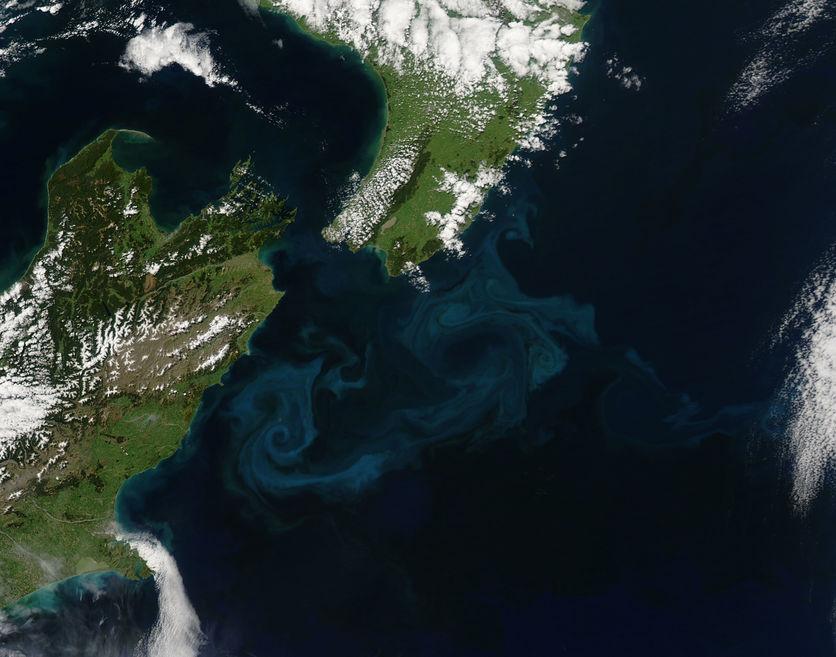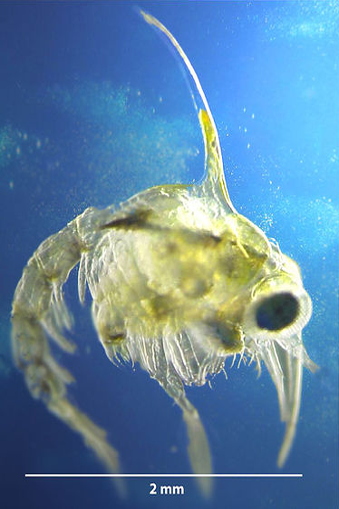Plankton are predominantly free-floating organisms that move with the ocean currents. Many different species make up plankton, so they are defined by this ‘free-floating’ characteristic rather than their biological classification. Plankton can be divided broadly into three groups – phytoplankton (photosynthetic organisms), zooplankton (animals) and bacterioplankton (bacteria).
Phytoplankton
Phytoplankton are microscopic, photosynthesising organisms that provide the food base for almost all life in the marine environment. Just like plants on land, they need light, water, carbon dioxide and nutrients to grow and reproduce. They convert energy from sunlight into food for the zooplankton and are key primary producers in the marine food web.
Phytoplankton do not fit neatly into one taxonomic group and represent 10 different classes from 4 different kingdoms. They vary in size from less than 0.001 of a millimetre to approximately 1 millimetre in length. There is also significant diversity in the shape of phytoplankton, from the very simple to the very complex. The two major groups are the diatoms and the dinoflagellates.
Most phytoplankton live in the upper 100 metres of the ocean, as they rely on sunlight to photosynthesise. They are often found in high numbers in nutrient-rich areas close to shore, and blooms of phytoplankton can often be spotted easily from boats and the air. Some blooms of phytoplankton (most commonly algal species) are considered toxic and can cause major problems for ecosystems, resulting in the deaths of large numbers of organisms.
Zooplankton
Zooplankton is the collective term for an extremely diverse group of animals found in the marine environment. The group includes single-celled organisms, jellyfish, worms, molluscscrustaceans and even some types of fish. Zooplankton are found throughout the marine environment, and each species has a preferred depth range.
Some zooplankton species are permanently free-floating in the water column; others may only be present for short periods of their life cycle, for example, sea stars in their larval stage. Sea stars are therefore considered zooplankton for this stage of their life cycle, but their adult form is a benthic animal.
Zooplankton vary greatly in size – from less than 1 millimetre (mm) to larger than 30 centimetres in some species – and are typically grouped by their size: microzooplankton (less than 0.2 mm), mesozooplankton (0.2–20 mm in length) and macrozooplankton (longer than 20 mm).
Zooplankton play a crucial role in the marine food web as the primary herbivores that feed on the phytoplankton. Phytoplankton are too small to be eaten by larger marine animals, and zooplankton provide an important link between the primary producers and the larger consumers.
Bacterioplankton
Bacterioplankton are the free-floating bacteria that live throughout the water column. They are preyed upon by smaller zooplankton. Some of the bacteria in this group are autotrophic and produce their own food through photosynthesis. Others are heterotrophic and rely on other organisms for food. Bacterioplankton play an important role in the food web, breaking down organic material and making nutrients available for the phytoplankton.
Related content
Join this online citizen science project to look at marine microorganisms.
Useful link
Visit the Te Ara website to learn more about plankton.


